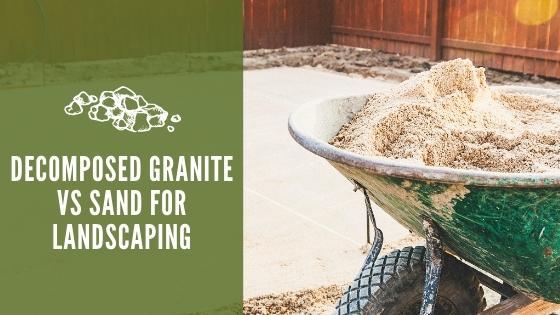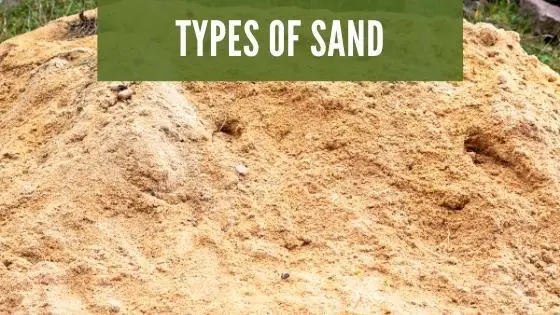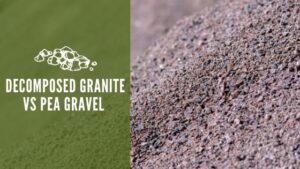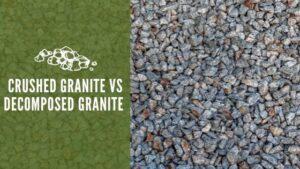Decomposed Granite vs Sand for Landscaping

When choosing material for your landscape, you have many options. Sand and decomposed granite (DG) are two popular choices that may seem similar at first glance.
Some DG has a sandy texture, but it is quite a different material and has different properties in the landscape. Let’s explore these two materials to see which one might be better for your next project.
What Is the Difference Between Sand and Decomposed Granite?
Sand is a common material considered one of the three types of soil. The other two are loam and clay. Sand is found in deserts, riverbeds, and beaches worldwide. Depending on its composition, it can have different colors, including black, green, pink, and white. Sand and decomposed granite are similar in that they consist of materials that have been weathered and broken down into fine pieces.
The difference between decomposed granite and sand is that decomposed granite only consists of broken-down granite. Sand can be a mixture of minerals, quartz, feldspar, mica, and silicon dioxide. It can also contain the broken-down shells of ancient sea creatures.
Sand and decomposed granite have a similar texture, but their composition is quite different. Both result from weathering processes involving water, wind, and the freeze/thaw cycle.
Can I Use Sand Instead of Decomposed Granite?
In some cases, you can use sand instead of decomposed granite. You need to be careful about the different types of sand you use because they have different purposes and characteristics. Utility sand has a coarse texture and can be a mixture of colors. It can also have little pieces of stones. It is typically used to fill in holes or provide a base and often contains debris.

Beach sand is finer textured than utility sand and is typically used when you want a soft landing, such as on a playground or volleyball court. You can purchase “play sand,” which has been determined to be free of silica and safe for children to play on.
Masonry sand is white sand, but it can also come in beige, tan, or gray. It is fine sand that has been processed and is used to create mortar or concrete. Masonry sand is the type typically used for patio construction or hardscape surfaces.
When it comes to decomposed granite, you also have a choice of materials available on the market. You can choose natural decomposed granite that is the least expensive and is simply aggregates of granite without anything added. It is the most common type used for mulch, patios, and garden paths.
You can also choose stabilized DG, which has a stabilizer with the granite aggregates that bind it together. It can last longer than loose decomposed granite, but it may not be appropriate for use around plant materials. Resin-coated decomposed granite is also available that has a natural resin mixed in to the granite aggregates. This creates a surface similar to asphalt, but it has a more natural look.
Decomposed Granite Pros and Cons
One thing to consider with decomposed granite is that depending on the manufacturer and where it is obtained, it can have a ratio with more stones than sand or the other way around. If you get DG that is on the sandy side, it can be used similarly to any other type of landscape sand. If you choose one with more stones, it can be a better choice for walkways and paths because it provides a more solid surface.
If you choose DG that contains more stone than sand, it tends to track in dirt much less than natural sand. It provides excellent drainage and can be used as mulch at the base of trees to keep the ground weed-free. DG tends to compact over time, and this can affect its drainage. DG is available in green, red, black, gray, brown, buff, and golden colors.
Sand for Landscaping Pros and Cons
The main difference to consider when choosing sand for your landscape is that it is a soil type, and not all plants will tolerate it. It would be appropriate for a xeriscape or four plants that prefer sand as their natural environment, but it could harm plants that prefer loam. Also, fine sand that is light in texture can blow away or wash away easily. Another disadvantage to sand is that it does not come in a wide variety of colors compared to DG. Sand is an excellent, low-cost alternative for beds that contain plants that thrive in this type of soil.
You have many choices when it comes to sand and decomposed granite. Whether you choose DG or sand, it is important to make sure that you choose the right type for your purposes. You should consider whether you will use it around plants or create a path or hardscape.


